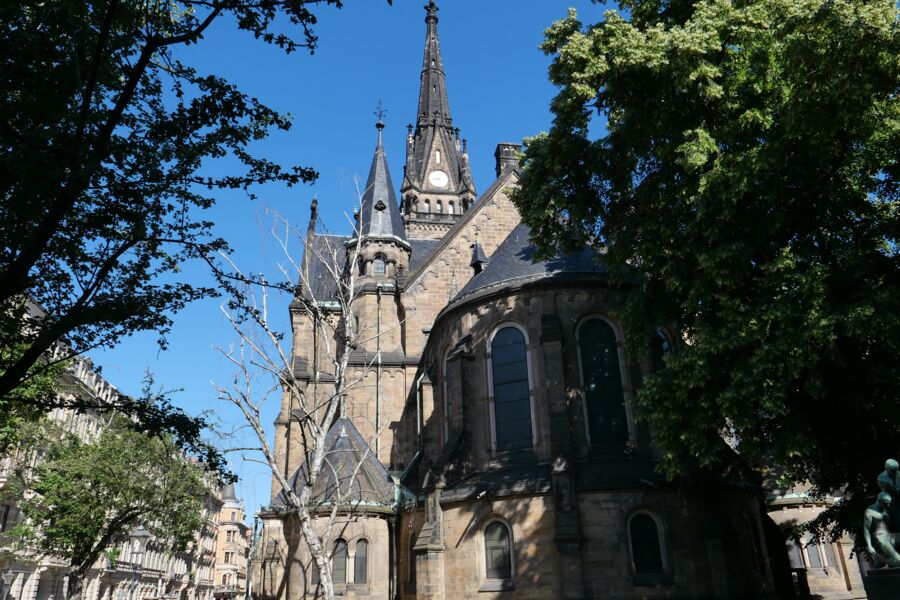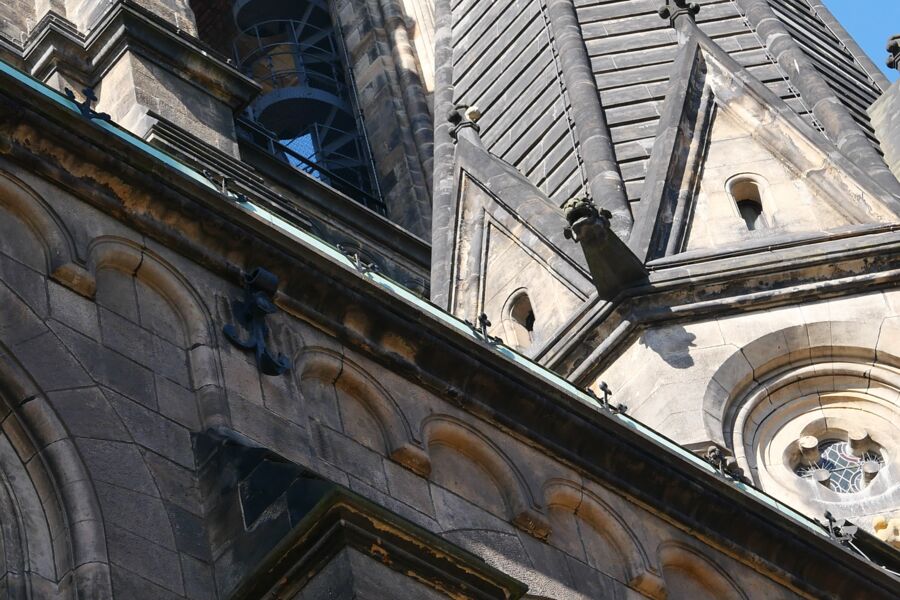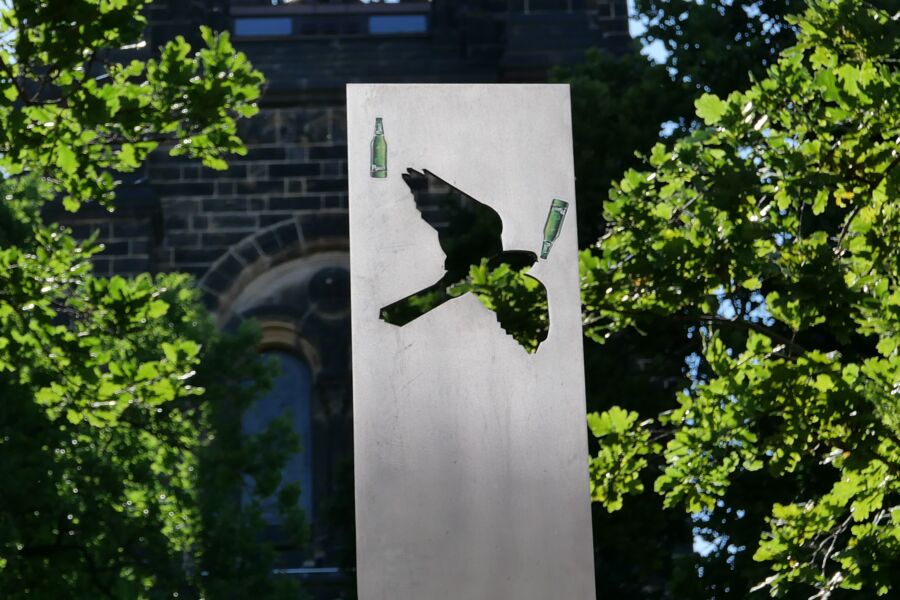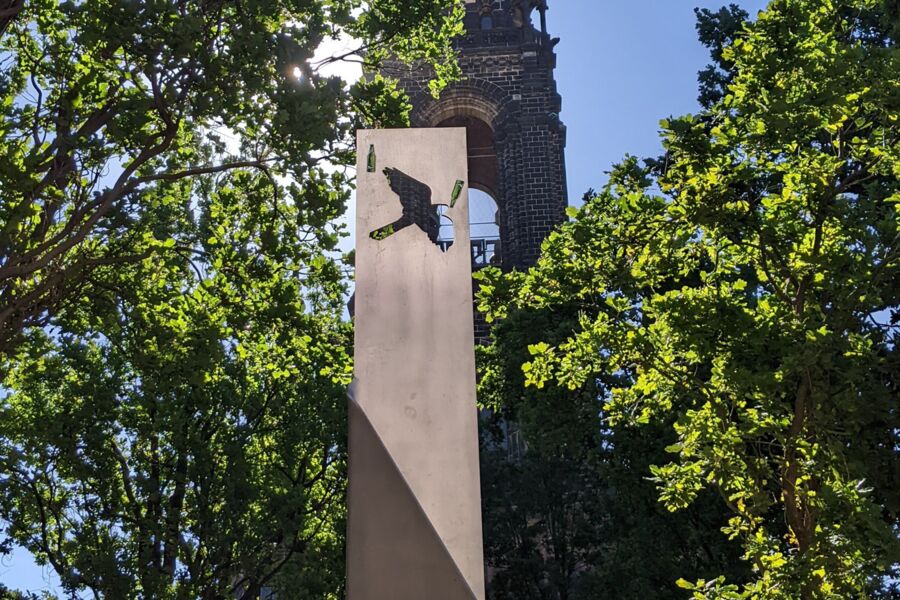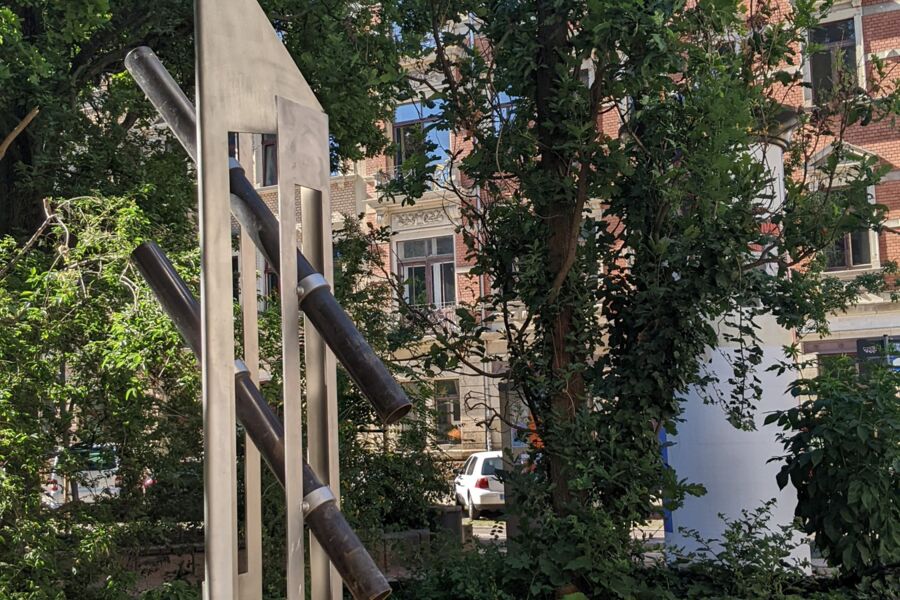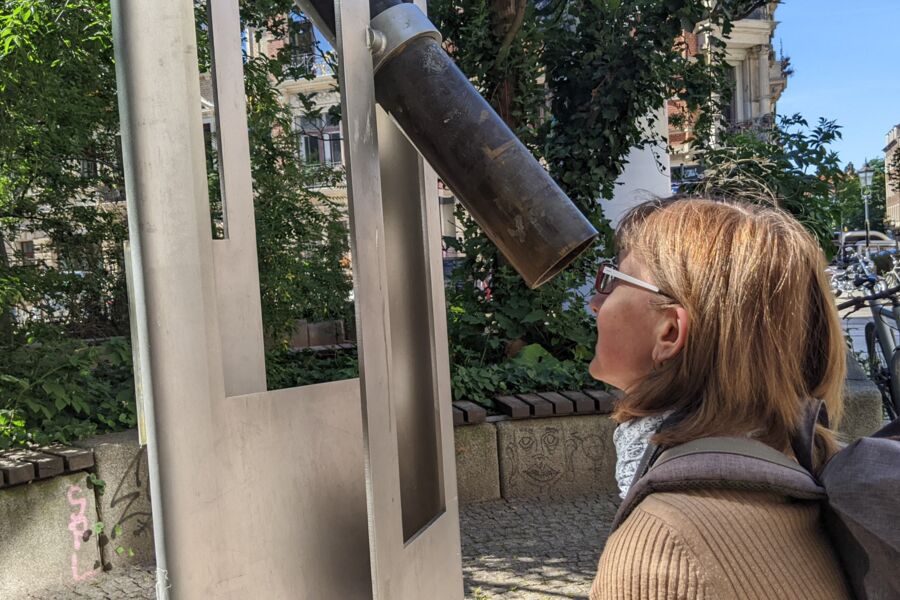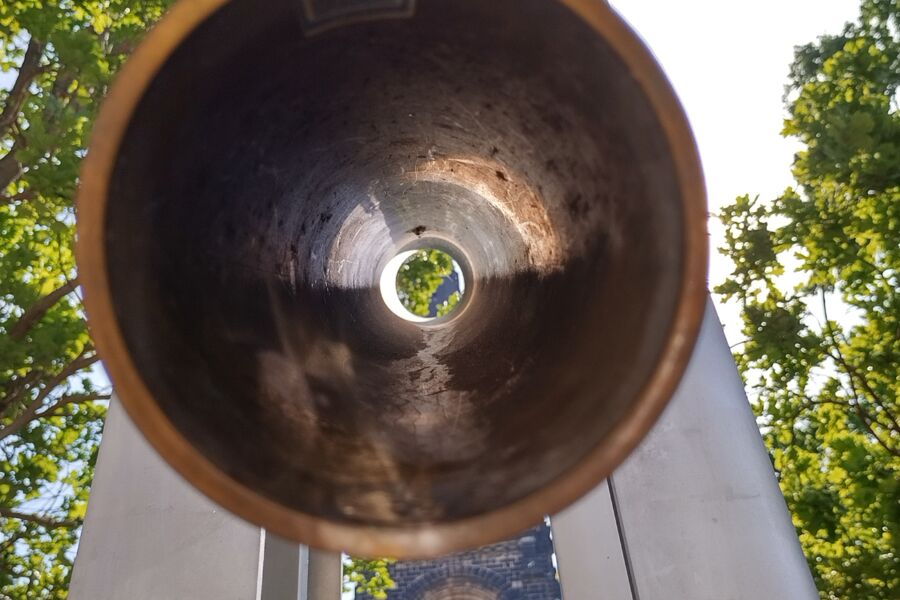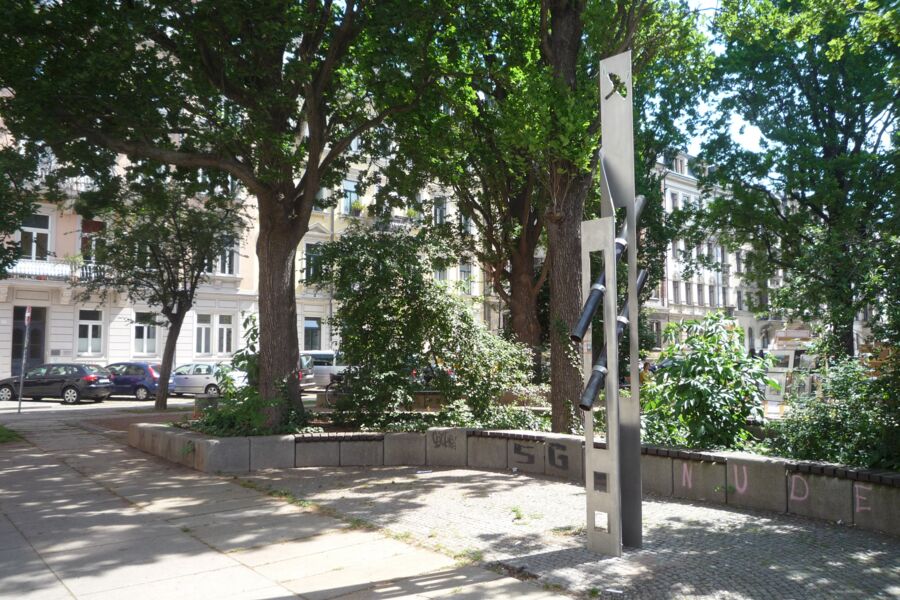
Animals on house-hunt
At the pinnacle of Martin-Luther-Church, there are kestrels nesting (falcus tinnunculus). If you’re lucky, you can watch them flying in and out. This species is up to 35 cm in size with a wing span of up to 75 cm, easy to recognize by the bright “kikikikiki” calls, the rusty red feathering and the characteristic stationary flight. With heavy beats of their wings, the small birds of prey stand in the headwind, spy for food which they capture in a nosedive.
They go on their hunts for mice, lizards, moles as well as small birds and insects up to five kilometres from their site. On the nearby banks of the river Elbe they find plenty of food, especially voles.
With a height of 81 metres, the pinnacle in the district “Äußere Neustadt” offered itself as a nesting opportunity. In the mid-nineties, the first kestrel couple settled down at the visitors’ platform. As the church was reconstructed in 2016, the breeding site was integrated into the pinnacle, so that the strictly protected species wasn’t directly exposed to unpleasant weather conditions any longer.
Moreover, two more nesting boxes have been installed in the dormers at the eastern side of the nave. Hence, either the site in the pinnacle or the left-side nesting box have been occupied every year. That means, only one couple at a time has bred so far. The couple can choose between the nesting sites and swaps them from time to time.
Since the Middle Ages, kestrels have been following men into the towns and cities. Towers, walls, and castles serve them as substitute rocks. They are highly desired breeding sites for the birds that have adapted to urban spaces. One couple raises three to five squabs from April to August. Some of them spend the winter months in the city, some at the edges of woods and fields. Depending on weather and food situation, kestrels may also migrate southwards down to the north of Africa.
In Saxony, there live 2,500 to 4,000 couples; the population in Dresden fluctuates between 80 and 160. In the eighties, there were approximately 200 couples. Back then, the desolate Wilhelminian style buildings offered vital niches for the kestrels, such as ventilation openings, stucco elements or wooden cornices. Moreover, the bomb attacks of 1945 had left numerous open areas on which they had been able to find food for decades.
In the course of reconstruction after the political change, the population in Dresden declined distinctly because urban wasteland was sealed and nesting places disappeared from the smoothed fronts. Meanwhile, the Environmental Office has had numerous nesting boxes installed. Nature conservation authorities and private people, too, actively protect the kestrels today, the more as the rather small and neat bird even takes on pigeons, thus helping to drive them away from buildings where their excrements might cause damage.


